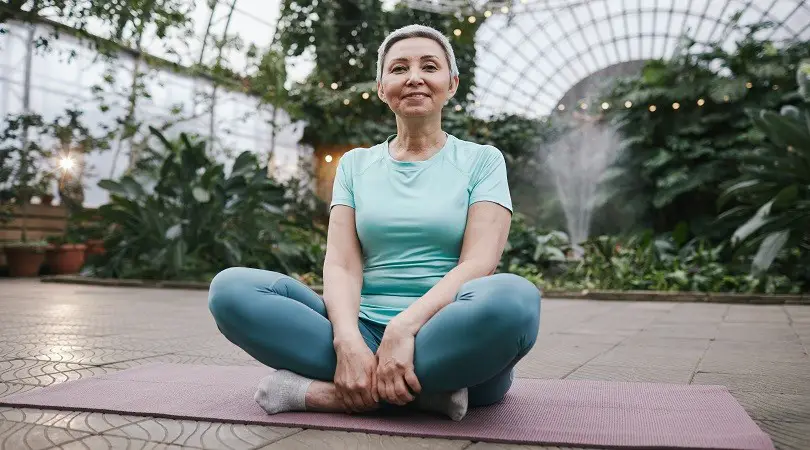Last Updated on January 6, 2025
A vibrant community is more than healthy individuals. It’s a shared lifestyle that buzzes with well-being. Health in a community isn’t just about disease-free bodies or physical fitness. It’s evident in shared laughter during park yoga sessions. It shines through the success of community gardens. It’s in the buzz of healthful recipe exchanges at neighborhood potlucks.
This vision may seem idealistic, but it’s within our reach. Creating a healthy community takes collaboration, persistence, and shared goals. As community members, we can nurture these values. We can build neighborhoods rooted in health and happiness. Every small step towards this goal counts. Each stride moves us towards a healthier, happier community.
Here are eight ways to improve health and fitness in your community. But before diving into these ways first we discuss how mastering public health may help in a healthier community.
Mastering Public Health in the Digital Age
Mastering public health in our evolving digital era calls for a blend of traditional knowledge and modern innovations. Grasping the dynamics of public health is about more than just understanding the principles of disease prevention or health promotion. It also involves appreciating the importance of technology and digitization in advancing health strategies. Building this holistic perspective requires professional expertise in public health.
It is where the power of mastering Public Health shines. This flexible and comprehensive program equips you with the necessary skills to steer your community toward healthier futures. A degree like this not only opens doors for diverse career opportunities but also enables you to be a guiding light in your community’s journey toward better health. Therefore, considering an online MPH could significantly make a profound difference in your community’s well-being. Let’s harness the power of knowledge to foster a healthier, happier community.
Encouraging Fitness in Your Neighborhood
1. The Outdoor Gym Revolution
Outdoor community gyms, an emerging trend in public health, offer much more than fitness. These spaces form a hub of local interaction and camaraderie. A simple, accessible workout outdoors doesn’t just flex muscles; it soothes minds and fosters a sense of belonging. As an appealing alternative to closed gymnasiums, these spaces make physical activity a norm, not a chore.
Furthermore, outdoor gyms play a pivotal role in transforming community health. Just a few steps in the park, the gym helps integrate fitness into everyday routines. As community members, we can drive this transformation. Setting up outdoor gyms in our neighborhoods can trigger a ripple effect toward total well-being.
2. Community Fitness Events
Organizing community fitness events can work wonders for a neighborhood’s health and vitality. These events unite people, fostering a sense of community while promoting physical activity. Whether it’s a morning yoga session, a group run, or a friendly sports competition, these events infuse fun into fitness.
Moreover, fitness events are not just about burning calories. They promote mental wellness and create opportunities for neighbors to bond over shared goals. Essentially, they transform fitness from an individual pursuit into a collective endeavor.
Community fitness events are an invaluable tool for a healthier neighborhood. They serve as an engaging, inclusive, and effective way to cultivate a culture of health and wellness in our communities. They lay the foundation for a healthier, happier future.
Nurturing Healthy Eating Habits
3. Community Gardens – A Delicious Idea
Community gardens are a delightful mix of health, community, and nature. These shared spaces offer more than just fresh produce. They sow seeds of collaboration and camaraderie among neighbors. Gardening together, community members nurture not only plants but also relationships. These gardens promote healthier eating habits, with locally grown fruits and vegetables at your doorstep.
The act of gardening itself serves as a form of physical activity. Community gardens are a triple win – they encourage healthier eating, physical activity, and social interaction. They indeed offer a wholesome approach to community health and well-being.
4. Neighborhood Potlucks – A Feast of Health
Neighborhood potlucks can be a delightful catalyst for health in a community. These gatherings are not just a chance to share food but to nourish health and friendships alike. Potlucks can promote healthier eating habits by focusing on nutritious, homemade meals. They offer a platform to exchange wholesome recipes and culinary inspirations. More importantly, shared meals and activities encourage a sense of neighborhood. Neighborhood potlucks turn meal times into health education and community bonding opportunities. Indeed, these communal feasts can be a tasty path to a healthier setting.
Promoting Mental Health and Well-being
5. Building a Supportive Community – The Power of Connection
Creating a supportive community is a cornerstone of mental health promotion. Human connection has a profound impact on our mental well-being. In a tight-knit community, individuals feel valued, understood, and less alone. This social support can buffer against stress and help cope with life’s ups and downs.
Furthermore, it can foster a sense of belonging and mutual care. By promoting open conversations about mental health, communities can break down stigma and facilitate early help-seeking. Therefore, nurturing a supportive community is a powerful strategy for enhancing mental health and overall well-being.
6. Mindfulness and Mental Health Workshops
Community-based mental health workshops can play a vital role in promoting mental well-being. These workshops educate individuals about mental health, reducing stigma, and fostering empathy. They teach valuable skills such as stress management, mindfulness, and self-care. Participants learn to recognize signs of mental distress in themselves and others, promoting early intervention. Importantly, these workshops also create a supportive space for people to share experiences and realize they are not alone. Thus, mental health workshops can equip a community with knowledge, skills, and empathy, making it a stronghold for mental well-being.
Social Media – A Powerful Tool for Health and Fitness
7. Health Education Through Social Media
Social media is effective for health education. It offers a platform to disseminate accurate health information to a broad audience. Tips on nutrition, exercise, mental health, and disease prevention can be shared and amplified. Interactive formats like videos, quizzes, and live sessions can make learning engaging. It allows for two-way communication, enabling users to ask questions and share experiences. Thus, social media can transform health education, making it accessible, engaging, and community-centered.
8. Social Media Challenges – Fitness, Fun, and Fandom
Social media fitness challenges are reshaping how communities engage with health. These online initiatives encourage participants to commit to specific fitness goals, turning exercise into a shared, enjoyable pursuit. They offer a fun, engaging way to promote physical activity and healthy habits.
Simultaneously, they create a virtual support network, motivating individuals to stay consistent. The visibility of progress and the shared sense of accomplishment can enhance motivation. In essence, social media fitness challenges harness the power of the digital community to boost health and fitness.
Conclusion
In conclusion, fostering a healthy community is a collective endeavor, achievable through innovative strategies and shared commitment. Whether outdoor gyms, mental health workshops, or social media challenges, each initiative shapes the community’s health. As community members, our small steps toward promoting health and fitness can significantly improve our neighborhood’s well-being. Ultimately, a healthier community isn’t just a dream – it’s a possibility.








